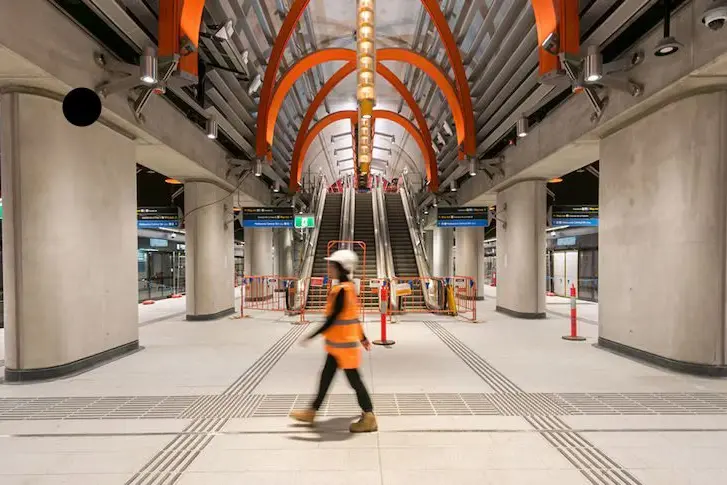PHOTO
The long awaited Metro Tunnel will open in early December with hundreds of new services a week.
Premier Jacinta Allan and Minister for Transport Infrastructure Gabrielle Williams announced the Summer Start program for the tunnel’s opening in December, followed by the Big Switch network-wide timetable integration on 1 February.
According to the government, the opening is one year earlier than forecast compared to the original completion date in 2026 set out in the business case.
And from the day the Metro Tunnel opens in early December for its Summer Start, public transport in Victoria will be free for everyone, everywhere, every weekend until 1 February.
That means every tram, every bus, every Melbourne train, every regional train, for every passenger – from the first service on each Saturday to the last service on each Sunday.
During the Summer Start period, Metro Tunnel services will run seven days a week and stop at all five new underground stations: Arden, Parkville, State Library, Town Hall and Anzac.
• Monday to Friday – services every 20 minutes from 10am until 3pm between Westall (Cranbourne and Pakenham lines) and West Footscray (Sunbury line)
• Weekends – services every 20 minutes from 10am until 7pm between Westall and West Footscray, every 40 minutes from East Pakenham, and every 60 minutes from Sunbury.
It means there are more than 240 extra services a week during the Summer Start for passengers along the Cranbourne, Pakenham and Sunbury corridor – all running through the Metro Tunnel – in addition to existing services.
Existing services on those lines will continue as normal through the City Loop during the Summer Start, and passengers can connect to the Metro Tunnel at interchange locations, including Footscray and Caulfield stations.
The timetable will also stay the same on every other line during the Summer Start.
Passengers on these lines can change to a Metro Tunnel service at Flinders Street or Melbourne Central without tapping on or off.
According to the government, the reduced Summer Start schedule is key to the Metro Tunnel opening safer, smoother and sooner.
It also means the tunnel won't sit idle during the lead-in time for the new timetable, and will be able to open immediately upon safety approval.
The Metro Tunnel should mean faster travel across the city through the new tunnel — around 12 minutes end-to-end on hundreds of new services a week – plus new direct access to Melbourne’s major hospitals, universities, and St Kilda Rd, and time for everyone to get familiar with the new system and its stations.
That should also benefit visitors from the country, including those on the Albury line in traversing the metro area from east to west and west to east.
On Sunday, February 1, Victoria’s entire train network will be overhauled when the Metro Tunnel is integrated into the wider transport network, thousands of individual timetable changes are made at once, and more than 1000 new weekly train services commence.
A new timetable will be in place everywhere – including buses, trams, regional and metropolitan trains.
Premier Jacinta Allan said it would be an incredible moment for all Victorians.
"Victorians have patiently waited for this tunnel to get built underneath their feet and behind big sheds, and now they’ll be able to use it,” she said.
“The Metro Tunnel will transform Melbourne, cut congestion and get you to work, uni and home sooner – and it opens in early December, a year ahead of schedule.”
Minister for Transport Infrastructure Gabrielle Williams said the government will spend months communicating with passengers in the lead up to and after the Big Switch, so they know how their journey will change and improve.
Liberal MP for Benambra Bill Tilley said the government spent $20 billion on the tunnel (the government claimed it was $13.8B) and North East line commuters will achieve zero benefit.
"Trains will remain over-crowded, services inadequate, because Labor governs only for Melbourne and forgets country Victoria," Mr Tilley said.
"The cost of this monument to Labor is the equivalent of 20 Greenfield Hospitals for the Border."

